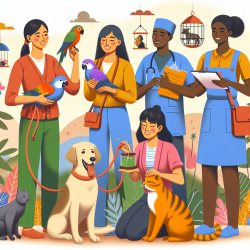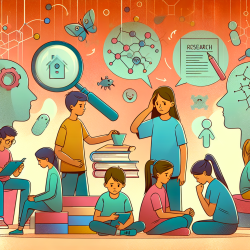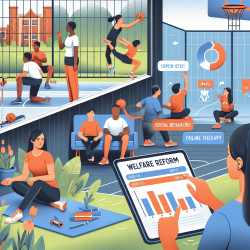Introduction
In the ever-evolving field of speech-language pathology, practitioners are continually seeking innovative ways to enhance therapeutic outcomes for children. One promising area is the integration of animals in support roles. The research article, "Defining Terms Used for Animals Working in Support Roles for People with Support Needs," offers valuable insights into how practitioners can refine their skills and improve therapy outcomes by understanding and utilizing animal support roles effectively.
Understanding Animal Support Roles
The research highlights the importance of clear definitions for various animal support roles, such as "therapy animal," "emotional support animal," and "educational/school support animal." This clarity is crucial for practitioners to ensure they are utilizing the right type of animal support for their clients' specific needs.
For instance, therapy animals are integrated into structured, goal-directed treatment plans by qualified health professionals, whereas emotional support animals provide comfort and emotional benefits without the need for specific training. Understanding these distinctions allows practitioners to make informed, data-driven decisions about incorporating animals into their therapy sessions.
Implementing Research Findings
Practitioners can enhance their skills by implementing the research findings in the following ways:
- Training and Certification: Ensure that animals used in therapy are properly trained and certified for their specific roles. This guarantees safety and maximizes therapeutic benefits.
- Customized Therapy Plans: Develop therapy plans that incorporate animals in a way that aligns with the client's specific goals and needs, leveraging the unique benefits each type of animal support can provide.
- Continuous Education: Stay informed about the latest research and developments in animal support roles to continuously improve therapy outcomes.
Encouraging Further Research
The research article encourages practitioners to engage in further research and discussions about animal support roles. By doing so, they can contribute to the ongoing refinement of definitions and practices, ultimately leading to better outcomes for children and other individuals with support needs.
Engaging with professional organizations and attending workshops or conferences focused on human-animal interaction can provide valuable opportunities for learning and collaboration.
Conclusion
Incorporating animals in support roles into speech-language pathology can lead to significant improvements in therapy outcomes for children. By understanding the distinct roles and benefits of different types of animal support, practitioners can make data-driven decisions that enhance their practice and the lives of their clients.
To read the original research paper, please follow this link: Defining Terms Used for Animals Working in Support Roles for People with Support Needs.










